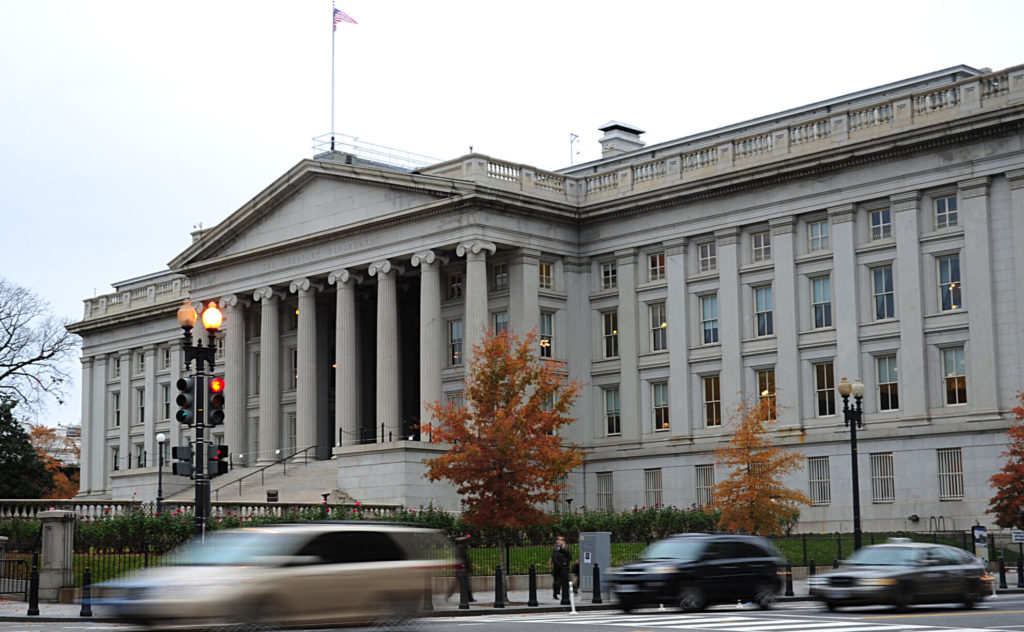
马斯克缴天文数字税款 特斯拉却不需缴分文
文 / 李可爱
02/11/2022

(早报讯)风云人物全球富豪马斯克(Elon Musk)多次公开高调喊话,他是2021年缴付最多联邦税的人,缴税额达惊人数字110亿美元。但是另一面,身为电动汽车特斯拉(Tesla)首席执行官的他,却低调处理特斯拉不需支付一分税款的消息。
根据美国有线电视新闻网(CNN Business)称,尽管特斯拉刚刚发布了迄今为止最赚钱的年度业绩,但在可预见的未来,特斯拉却可能不会缴纳任何联邦税。特斯拉业绩显示,去年年度净利达55亿美元,调整后盈利则是76亿美元。
美国有线电视新闻网说,特斯拉最近向美国证券交易委员会(Securities and Exchange Commission)提交的年度业绩报告的备注显示,特斯拉去年在美国的业务税前损失1亿3000万美元。它声称,集团所有税前盈利(总值超过60亿美元)都是来自海外的业务。虽然特斯拉的45%的营业额源自美国市场。
基于此,特斯拉表示其外国税单达到8亿3900万美元,但其州税单(State tax bill)仅是900万美元,而它的联邦税单(Federal tax bill)则是零。
非营利税务出版商Tax Analysts首席经济学家、美国公司税务专家沙利文(Martin Sullivan)说:“这违反了普通常识逻辑,但并不违反美国税法。”
沙利文表示,他认为“特斯拉美国业务损失1亿3000万美元”,是美国跨国公司的一种常见做法:让集团业务结构“做成”是海外子公司呈报盈利的公司,使美国业务几乎没有或完全没有需要缴税的收入。
该报道还说,美国财政部最近的一份报告发现,美国跨国公司的61%国际盈利都只记录在被称为避税天堂的七个小国家:百慕大、开曼群岛、爱尔兰、卢森堡、荷兰、新加坡和瑞士。许多民选官员和拜登政府都曾经说过要打击这种做法。但是到目前为止,美国国会仍未能采取行动阻止它。

White House: 400 wealthiest families paid average tax rate of 8.2 percent
BY NAOMI JAGODA
9/23/2021

The White House released an analysis on Thursday estimating that the 400 wealthiest American families paid an average federal income tax rate of only 8.2 percent on $1.8 trillion of income from 2010 to 2018.
“Two factors that contribute to this low estimated tax rate include low tax rates on the capital gains and dividends that are taxed, and wealthy families’ ability to permanently avoid paying tax on investment gains that are excluded from taxable income,” the report said.
The analysis, which was authored by economists from the White House Council of Economic Advisers and the Office of Management and Budget, comes as Democrats in Congress are working on a tax-and-spending package that would advance much of President Biden‘s agenda. Biden has proposed a number of tax increases on the wealthy and corporations in order to pay for his spending priorities in areas such as health care and child care, and he is seeking to prevent moderate congressional Democrats from scaling back these proposals.
The White House analysis is based on IRS statistics, the Federal Reserve’s Survey of Consumer Finances, and Forbes magazine estimates about the 400 wealthiest Americans.
The White House noted that its estimate of the tax rate for the wealthiest households is “much lower” than other groups’ estimates of top income tax rates. The administration’s takes into account income from unrealized capital gains, which is not typically included in this type of analysis.
The report highlighted Biden’s proposals to raise the top capital gains rate and end the “stepped-up basis” tax preference that benefits heirs as ways to address the fact that wealthy Americans pay a low tax rate.
Legislation approved by the House Ways and Means Committee earlier this month included a smaller capital gains increase than Biden had proposed and does not repeal stepped-up basis. But Senate Democrats are expected to offer their own ideas for how to pay for the spending package, and Finance Committee Chairman Ron Wyden (D-Ore.) has indicated that he wants to prevent billionaires and their heirs from avoiding taxes on stock gains.
Wyden said in a statement Thursday that “the White House’s new report is shocking but not surprising.”
Top 1 Percent Avoid Paying $163 Billion in Taxes Each Year: Treasury Department
By Leia Idliby
9/08/2021

The Department of Treasury has found that the wealthiest one percent of Americans have avoided paying $163 billion in taxes per year.
The Treasury’s analysis, titled “The Case for a Robust Attack on the Tax Gap” and written by Deputy Assistant Secretary for Economic Policy Natasha Sarin, opens by explaining, “A well-functioning tax system requires that everyone pays the taxes they owe.”
The report argues that narrowing the tax gap, which accounts for the difference between owed and collected taxes, will lead to a more equitable economy, as it currently “totals around $600 billion annually,” which would lead to “approximately $7 trillion of lost tax revenue over the next decade.”
Sarin’s report includes a table detailing tax data from 2019, which ultimately found that more than $160 billion lost annually is “from taxes that top 1 percent choose not to pay.”
The report goes on to argue that in order to collect owed taxes and enforce laws against high earners and corporations, the IRS needs funding to update their technology and to hire agents able to decipher “thousands of pages of sophisticated tax filings.”
“It also needs access to information about opaque income streams — like proprietorship and partnership income — that accrue disproportionately to high-earners,” she wrote.
The reports comes as President Joe Biden’s administration is pushing for a significant increase to the IRS budget. The White House has specifically called for $80 billion of investment over the next ten years, claiming it would help the government catch tax evasion schemes.
“Giving the IRS the information and resources that it needs will generate substantial revenue,” Sarin concluded. “But even more importantly, these reforms will create a more equitable, efficient tax system.”
Top 0.1% Tap Private Placement Life Insurance to Avoid Biden’s Taxes
Financial Advisor IQ
9/04/2021
The richest Americans who want to avoid paying higher taxes under President Joe Biden are tapping a niche product that has become more generally available, cheaper and flexible in recent months.
Some advisors who cater to the top 0.1% say that private placement life insurance is “dominating conversations,” according to Bloomberg.
Assets held in PPLI policies are tax-free, and when a policyholder dies, their heirs inherit the policy’s contents tax-free, Bloomberg writes. Assets inside a PPLI can also be brorrowed against or rolled into another insurance product, according to the news service.
PPLI policies, however, have complicated rules to qualify as life insurance to take advantage of the tax benefit, can fail if not properly funded and taking assets out comes with a heavy tax burden, Bloomberg writes.
“Clients are very interested in this right now,” said Tara Thompson Popernik, director of research for Bernstein Private Wealth Management’s wealth planning and analysis group, according to Bloomberg. “It takes some education to get them to wrap their heads around the concept, because it’s not just buying life insurance.”
But it’s not just the threat of Biden going after billionaires and millionaires to pay their “fair share” that’s making the loophole: a late-2020 insurance law change made PPLI “more powerful,” while competition among insurers has pushed down costs while increasing the choice of products, according to Bloomberg.
“Private placement life insurance poses a serious obstacle to President Biden’s goal of guaranteeing that high-income individuals pay tax on large gains at least once per lifetime,” said Daniel Hemel, a law professor at University of Chicago, according to the news service. “PPLI is a massive loophole — entirely legal, easy to exploit, and politically very hard to close.”
How Does Private Placement Life Insurance Work?
By Maxime Croll
9/04/2021
Private placement life insurance (PPLI) is a niche solution designed for wealthy individuals in high tax brackets who have a few million dollars available to commit.
Many times, those for whom PPLI was designed want to invest in hedge funds, but hedge funds can carry significant taxes: If the wealthy individual invests in them in their personal name, in a taxable account or in a trust, every trade the manager makes can generate a capital gains distribution, and any ordinary income is taxable at particularly high rates.
That’s a serious issue at higher income levels, where combined federal and state income and capital gains taxes can easily add up to nearly 50% in some jurisdictions.
One increasingly popular solution: Hold these assets within a life insurance policy.
Who does private placement life insurance make sense for?
PPLI isn’t for everybody. A good candidate for this strategy is someone with annual income in the millions, a net worth of $20 million or more or someone who controls a business that puts them in that category.
Life insurance comes with a number of important tax benefits, which can be major considerations for those in the highest tax brackets. But standard life insurance policies you can get from your neighborhood agent don’t contain the hedge funds, funds of funds and other alternative investments that these investors require for their own diversification and investment needs.
That’s where privately placed life insurance comes in: Wealthy families, family foundations, trusts, corporations and banks work with hedge funds and money management firms to create their own life insurance contracts, designed to reduce their tax burdens.
The idea is to combine the financial advantages of highly taxed hedge funds and similar investments with the tax advantages of life insurance. There are insurance and administrative costs associated with the life insurance contract, but the tax savings in a properly structured life insurance policy, plus the death benefit itself, more than make up for the additional insurance and administrative costs. And the insured can generally access most of the funds anyway, tax-free, via policy withdrawals and loans.
When a wealthy investor in a very high tax bracket wants to invest in hedge funds anyway, it often makes sense to create a privately placed life insurance policy to shelter the individual from taxes.
Qualifications to purchase PPLI
While anyone can buy a variable universal life insurance policy (as PPLIs are structured), PPLIs are an unregistered securities product. As such, agents can only present them to accredited investors.
Under current Securities and Exchange Commission (SEC) regulations, accredited investors are those with a net worth of at least $1 million (excluding primary residence), or income of at least $200,000 in each of the preceding two years. Married couples must demonstrate income of $300,000 in each of the preceding two years.
Ultimately, the owner is typically an individual or a trust. Holding the policy in an irrevocable trust allows the insured to keep the policy out of their taxable estate, possibly reducing eventual estate tax liability, though they give up rights to access the cash value prior to death.
In reality, the typical PPLI candidate or family has:
- A high net worth
- The ability to fund $1 million or more in annual premiums for several years, at least — $3 million to $5 million is typical
- A desire for hedge fund or alternative investment exposure
- Highly tax-inefficient investments
- High state and local income taxes in addition to federal (advisors should be alert to the effect of any state premium taxes on the strategy)
- A desire to shelter assets from creditors
It’s important to be able to make a significant investment over the first several years as this initial investment of premium “primes the pump,” meaning that, assuming the underlying investment subaccounts perform adequately, the insured’s policy can become self-funding. That is, growth in its cash value covers the cost of insurance. At that point, the insured can cease committing premium if they choose.
Where to buy private placement life insurance
Professional wealth managers tend to recommend vendors. However, some of the most prominent providers of PPLI services and insurance-dedicated funds (IDFs) include BlackRock, Wells Fargo Private Banking, John Hancock, Zurich, Crown Global and Pacific Life.
How private placement life insurance works
Privately placed life insurance is generally structured as a variable universal life insurance policy, meaning:
- Premiums are flexible. Policyholders can pay as much or as little premium as they like, whenever they like.
- The cost of insurance is deducted from the cash value in the policy subaccounts each month or each year.
- To keep the policy in force, the owner must pay enough premium to maintain enough cash value to cover the cost of insurance.
- If the cash value reaches zero, the policy will lapse.
The agent who sets it up will usually structure the policy to maximize cash value accumulation while keeping the death benefit (and thus the cost of insurance) relatively low. The policy owner, working with their insurance professional, then pays as much premium into the policy as possible every year.
The client gets the benefit of the tremendous tax advantages of the life insurance contract:
- Tax-free death benefits to heirs
- Tax-deferred growth of cash value
- Tax-free growth of dividends (if applicable)
Meanwhile, the insured still has access to accumulated cash values, which can be used for any purpose and accessed at any age. There are no penalties for accessing the cash value before turning age 59 1/2, as there are with annuities and with individual retirement accounts (IRAs). In addition, there are no required minimum distributions, as there are with annuities, IRAs and retirement accounts.
PPLI investments
As discussed, the best investment candidates for a PPLI policy are those that are tax-inefficient. They generate substantial current taxable income, imputed (phantom) income or capital gains unless they are held in a retirement account or life insurance vehicle that provides tax-free growth.
PPLI owners and their advisors either choose specific investments for their portfolios or carefully select money managers to manage their portfolios within the policies. Possible investments can include venture capital, real estate investment trusts, private equity funds, funds of hedge funds and commodity funds, or any fund with extremely high turnover rates that generate substantial short-term capital gains.
But that doesn’t mean anything goes. PPLIs must still meet IRS standards for investor control, insurance and diversification.
Investor control. Individual policy owners and family offices are prohibited from exercising influence over the specific investment decisions of the fund managers. If the owner exercises too much control, the IRS may disqualify the tax advantages of the policy. Current case law requires managers to operate on an independent, discretionary basis. Assets held in PPLI policies are not designed to be separately managed accounts, and they should not be treated that way.
Insurance standards. The life insurance structure allows owners to sell insurance-dedicated funds within the policy as often as they like and replace them with other qualified investments, without tax consequences. IDFs are financial products that are designed specifically for the PPLI market. Hedge funds and funds of funds often create a version of their flagship offering as an IDF that uses all the same strategies and managers but is also managed to adhere to laws and regulations that govern insurance portfolios.
Diversification requirements. Investments must also meet diversification rules:
- No single investment may make up more than 55% of the insurance subaccount portfolio.
- No two investments may constitute more than 70% of the portfolio.
- No three investments may constitute more than 80% of the portfolio.
- No four investments may constitute more than 90% of the total assets of the account.
Therefore, the portfolio must, in practice, contain a minimum of five distinct investments in order to fully qualify as life insurance. Otherwise, the IRS will disqualify the policy, and the owner will lose the tax advantages of the life insurance structure.
Accessing your money in a PPLI
Policy owners can withdraw from their cash value or borrow against it at any time, for any purpose.
Withdrawals Withdrawals are tax-free up to the basis of the policies. So owners can get back their premiums, minus fees, without tax consequences — as long as their subaccounts’ performance has kept up with the cost of insurance. If the cash value is greater than the owner’s basis in the policy — that is, what they have paid in — then additional withdrawals in excess of basis are taxed as a gain.
Policy loans You can borrow against the cash value of the policy with no underwriting or credit check. The loan is secured by the policy’s cash value. This makes the policy a solid choice for emergency funds. The loan does not have to be paid back, though the policy owner may want to replenish funds borrowed from the policy so as to maximize long-term tax-free growth.
Because the loans are secured by payments already made to the insurer, interest rates are often very low. Borrowers should be aware that interest does accrue, and borrowing will reduce any death benefits paid out unless the loan is paid back to the policy.
Contribution limitations and modified endowment contracts
The government imposes limits to how much premium the owner can contribute to the policy in a given year in order to help ensure life insurance is used for its intended purpose, as opposed to a tax shelter. The result of the contribution limit is the “seven-pay” test. If policyholders contribute so much premium to their policies that the policy would be paid up in less than seven years, it becomes a modified endowment contract (MEC). This will disqualify the policy from many of the tax advantages on withdrawals and loans:
- One of the great things about insurance policies is that when you withdraw cash value from an in-force life insurance policy, you get the benefit of first-in, first-out (FIFO) taxation. This allows you to withdraw as much as you’d like, up to your basis in the policy (the amount you have contributed), tax-free. If your policy becomes an MEC, this advantage disappears. Instead, the IRS will deem you to be withdrawing interest first, not your basis. This interest is taxable.
- Likewise, while the law allows you to take tax-free loans from a life insurance policy, once your policy becomes an MEC, those loans become taxable as income.
- Additionally, once your policy becomes an MEC, any withdrawals prior to age 59 1/2 become subject to a 10% early withdrawal penalty, just as with a qualified annuity or a 401(k).
Your policy documents should specify the annual MEC limit.
| Life insurance contract | MEC | |
|---|---|---|
| Premiums | Limited by seven-pay test | Not limited except by contract |
| Loans | Tax-free for life of policy | Taxable as income |
| Withdrawals | Tax-free up to basis (FIFO) | Taxable until all interest/gains are withdrawn |
| Death benefit | Tax-free | Tax-free |
| Death benefit amount | Usually kept small in PPLI to maximize growth of cash value | Used to maximize death benefit |
How are PPLI policies different from retail life insurance?
Structurally, privately placed life insurance is identical to a conventional variable universal life insurance policy. What sets the PPLI apart is the assets held in the subaccount: An everyday retail customer will choose from a limited menu of subaccount investments offered by the life insurance company.
But when you buy a PPLI, you can customize your investment subaccounts. You can include nearly any investment imaginable — from index funds to hedge funds. Your registered investment advisor or wealth manager can help design the investments in your menu of subaccounts.
Tax and other benefits of PPLI
High-income individuals are very tax-sensitive. The ordinary income tax rate on incomes above $518,401 in 2018 was 37%, plus additional Affordable Care Act taxes on high-income individuals. When you add in state and local income taxes in some jurisdictions, the income tax bite for high-income families could add up to nearly 50%.
The heart of the PPLI strategy lies in the tax advantage. The PPLI essentially converts a very tax-inefficient investment, such as a hedge fund, into a very tax-efficient one for the high-net-worth investor.
| Hedge fund held in personal account (typically) | Hedge fund held within a PPLI | |
|---|---|---|
| Death benefit | N/A | Tax-free death benefit |
| Income | Taxable at 37%-50% | Tax-free for life of policy |
| Short-term capital gains | Taxable at 37%-50% | Tax-free for life of policy |
| Long-term capital gains | Taxable at 20% | Tax-free for life of policy |
| Imputed income | Taxable at 37%-50% | Tax-free for life of policy |
| Transfers to other life policies | Taxable, gain over basis | Tax-free under IRC Section 1035 |
| Transfer to annuities | Taxable, gain over basis | Tax-free under IRC Section 1035 |
| Creditor protection | None | Enhanced |
| Estate tax treatment | Taxable unless in irrevocable trust | Taxable in estate of owner unless in irrevocable life insurance trust |
| Tax loss harvesting strategies | Investors can sell losers to offset capital gains | N/A, though losing policies can be surrendered |
| Treatment at death | Subject to probate | Bypasses probate — death benefit goes to beneficiaries in a matter of days |
This strategy neutralizes the impact of current income by placing the assets within a life insurance policy, with tax advantages similar to a Roth IRA. Assets within the policy enjoy tax-free growth for as long as they remain in the policy.
In addition to the tax benefits that generally accrue to life insurance cash values, PPLI policies often provide a number of additional benefits:
- Lower commissions. The cost of insurance and commissions is low compared to most retail life insurance products: Issuers are more interested in managing your money than in generating large upfront commissions.
- No surrender charges. Because they don’t rely on a commission-paid insurance sales force as traditional insurance companies do, they don’t need to recoup commission costs by imposing surrender charges.
- Phantom income is not taxed. Some investments generate a tax liability to the owner, even though there is no actual cash income distributed. For example, a zero-coupon bond pays no income until it matures, but the IRS forces taxpayers to pay taxes on imputed income as the bond approaches maturity. If the asset is held in a PPLI, the tax on imputed or phantom income is neutralized.
- Tax compliance is easier. Tax reporting is a constant headache for hedge fund investors and those who hold interests in limited partnerships and master limited partnerships. By holding these assets within a PPLI, the taxpayer can eliminate having to deal with K-1 reports and other reporting requirements.
- Creditor protection. Cash value life insurance is a proven way to shelter assets from creditors. Life insurance and annuities enjoy substantial asset protection in every state, and in some states, like Florida and Texas, creditor protection is unlimited. In some cases, PPLI life insurance assets are held offshore — placing these assets out of the reach of U.S. courts. No U.S. court can force a foreign company to release funds to a creditor.
新媒体广告策划
往微信群丢名片、砸海报、甩二维码
瞬间被踢飞,或者没人理?
资讯软文营销
你的文案专家
无论你是房地产经销、贷款专员,
还是保险经纪,或从事其他行业
我们将为你——
根据投放渠道、匹配群主题
打包定制资讯类带广告文案
配套地区、行业渠道投放
千群代发,精准推广
为你的事业助推
可扫码加小编微信:↓

